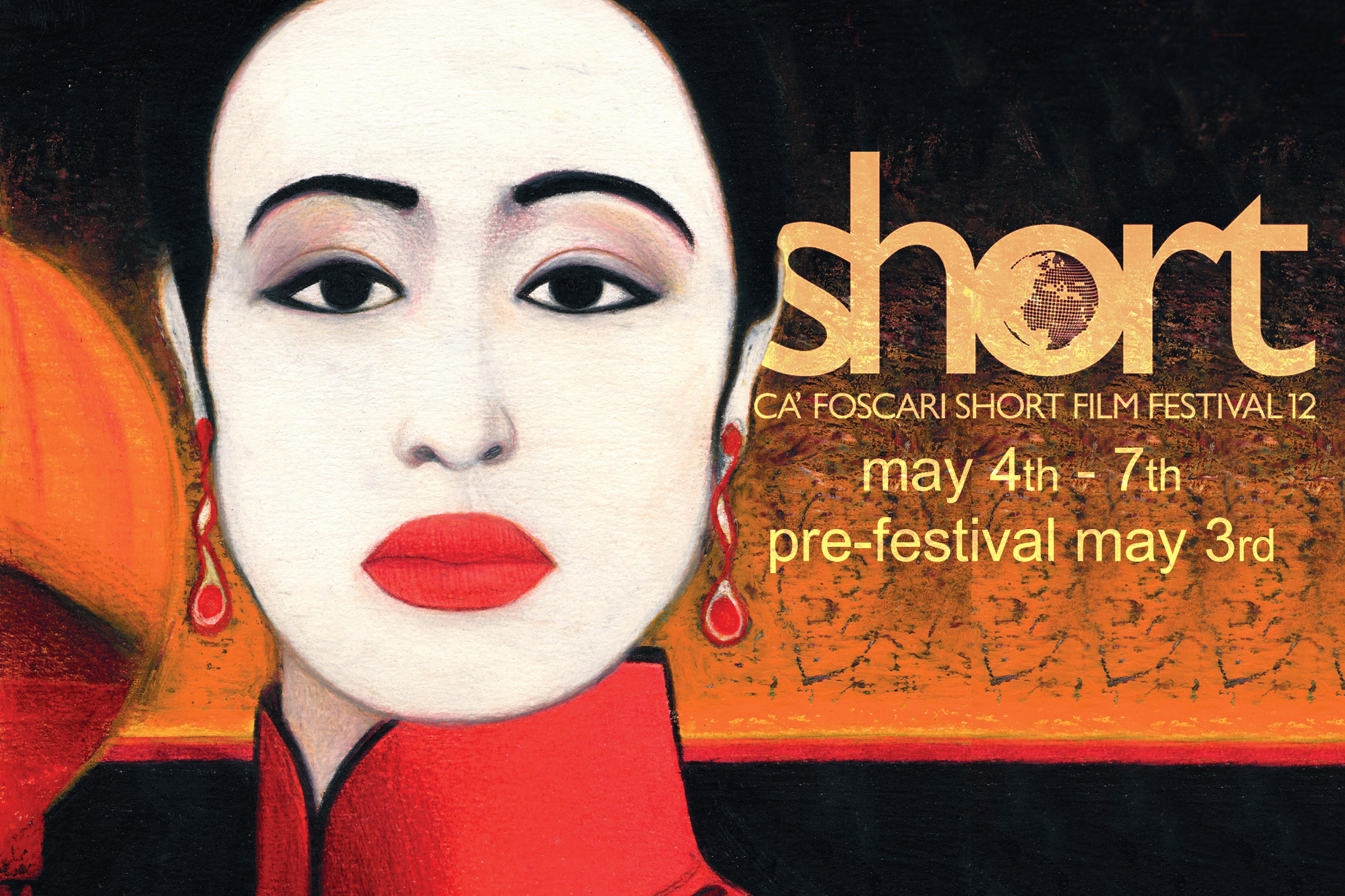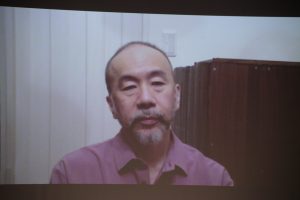
 Tuesday 3rd May, the pre-opening day of the twelfth edition of the Ca’ Foscari Short Film Festival saw the projection of A Snake of June, in collaboration with RaroVideo Channel and Nikkatsu Corporation. A Snake of June carries the name of Shin’ya Tsukamoto, director of cult movies such as Tetsuo (1989), Tokyo First (1995) and Vital (2004). Following the tribute paid to him last year, the Japanese director returns to the Short this year in the unusual role of the writer. His 2002 film has been, in fact, adapted as a novel written by the director himself. On Friday, the special program dedicated to Tsukamoto celebrated the Italian edition of the novel A Snake of June (Un serpente di giugno), published on that day by Marsilio. In the words of the author, who considers Italy as his “second home”, it has been a thrilling event. Tsukamoto – connected remotely from Tokyo – was interviewed on the Auditorium stage by Francesco Vitucci, who worked on the translation of the novel. Their conversation revolved around the director’s numerous artistic interests and his work as author.
Tuesday 3rd May, the pre-opening day of the twelfth edition of the Ca’ Foscari Short Film Festival saw the projection of A Snake of June, in collaboration with RaroVideo Channel and Nikkatsu Corporation. A Snake of June carries the name of Shin’ya Tsukamoto, director of cult movies such as Tetsuo (1989), Tokyo First (1995) and Vital (2004). Following the tribute paid to him last year, the Japanese director returns to the Short this year in the unusual role of the writer. His 2002 film has been, in fact, adapted as a novel written by the director himself. On Friday, the special program dedicated to Tsukamoto celebrated the Italian edition of the novel A Snake of June (Un serpente di giugno), published on that day by Marsilio. In the words of the author, who considers Italy as his “second home”, it has been a thrilling event. Tsukamoto – connected remotely from Tokyo – was interviewed on the Auditorium stage by Francesco Vitucci, who worked on the translation of the novel. Their conversation revolved around the director’s numerous artistic interests and his work as author.
 Driven by the idea of bringing new perspectives to his cinematographic work, Tsukamoto started to work on the adaptation; the challenges have been, however, numerous. The plot of the novel follows that of the film, adding details while keeping the rawness at its core. In a complex fight between lust and carnality, the lives of the three protagonists merge into a disturbing story of eroticism. With enthusiasm, Tsukamoto explained the great chance the novel has given him to explore further Shigehiko, husband of the protagonist Rinko, a male figure that goes quite unnoticed in the movie. In the novel, elements such as the first meeting between the married couple and the development of their relationship, made possible to provide to the readers a completer and more complex image of the character. The role played by the rain on the other hand, which was a fundamental aspect in the grim atmosphere of the movie, which was underlined by the blue saturation of the cinematography, has remained a central feature: the visual references to the movie took shape on paper thanks to the attention reserved to the reactions of the characters and the accurate descriptions of their sensations. But the most challenging aspect for the author was certainly the representation of female psychology: Tsukamoto confessed that his biggest worry was related to the impossibility of fully understanding Rinko and her most intimate aspects. As a matter of fact, the woman is the main character of the dual project A Snake of June and gathers on herself several features that work on contrast, as confirmed by the relationship with the rain: while her husband cannot stand its smell, on the contrary she takes her life force from it.
Driven by the idea of bringing new perspectives to his cinematographic work, Tsukamoto started to work on the adaptation; the challenges have been, however, numerous. The plot of the novel follows that of the film, adding details while keeping the rawness at its core. In a complex fight between lust and carnality, the lives of the three protagonists merge into a disturbing story of eroticism. With enthusiasm, Tsukamoto explained the great chance the novel has given him to explore further Shigehiko, husband of the protagonist Rinko, a male figure that goes quite unnoticed in the movie. In the novel, elements such as the first meeting between the married couple and the development of their relationship, made possible to provide to the readers a completer and more complex image of the character. The role played by the rain on the other hand, which was a fundamental aspect in the grim atmosphere of the movie, which was underlined by the blue saturation of the cinematography, has remained a central feature: the visual references to the movie took shape on paper thanks to the attention reserved to the reactions of the characters and the accurate descriptions of their sensations. But the most challenging aspect for the author was certainly the representation of female psychology: Tsukamoto confessed that his biggest worry was related to the impossibility of fully understanding Rinko and her most intimate aspects. As a matter of fact, the woman is the main character of the dual project A Snake of June and gathers on herself several features that work on contrast, as confirmed by the relationship with the rain: while her husband cannot stand its smell, on the contrary she takes her life force from it.
Lastly, the director shed some light on the aesthetic choices regarding the covers of the two versions of the book, as he was personally involved with them in the role of illustrator. The Japanese version of the book is brown and represents a flower that recalls the female figure, whereas in the Italian edition, it is partially tinged with purple, as he wanted to refer to the rain. But the meetings with the Japanese director are not over with this event: that is because on May 18th, at Casa del Cinema di Venezia, in a special screening organized by the Short, the European premier of the restored version of his fantasy-horror movie released in 1991, Hiruko the Goblin, will be presented.

